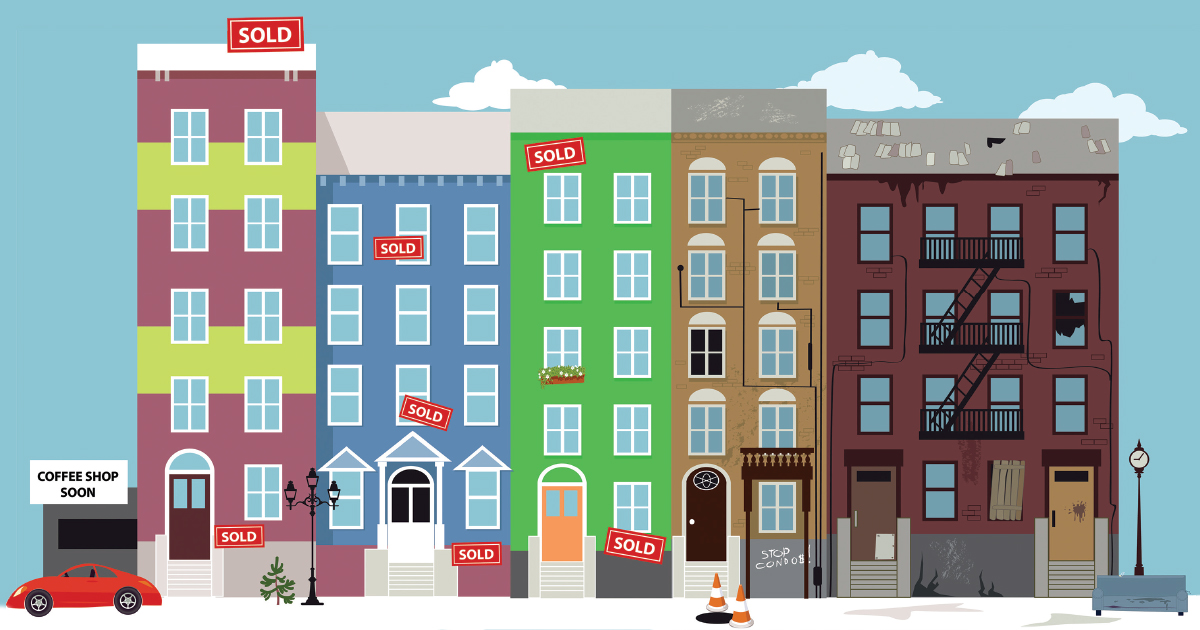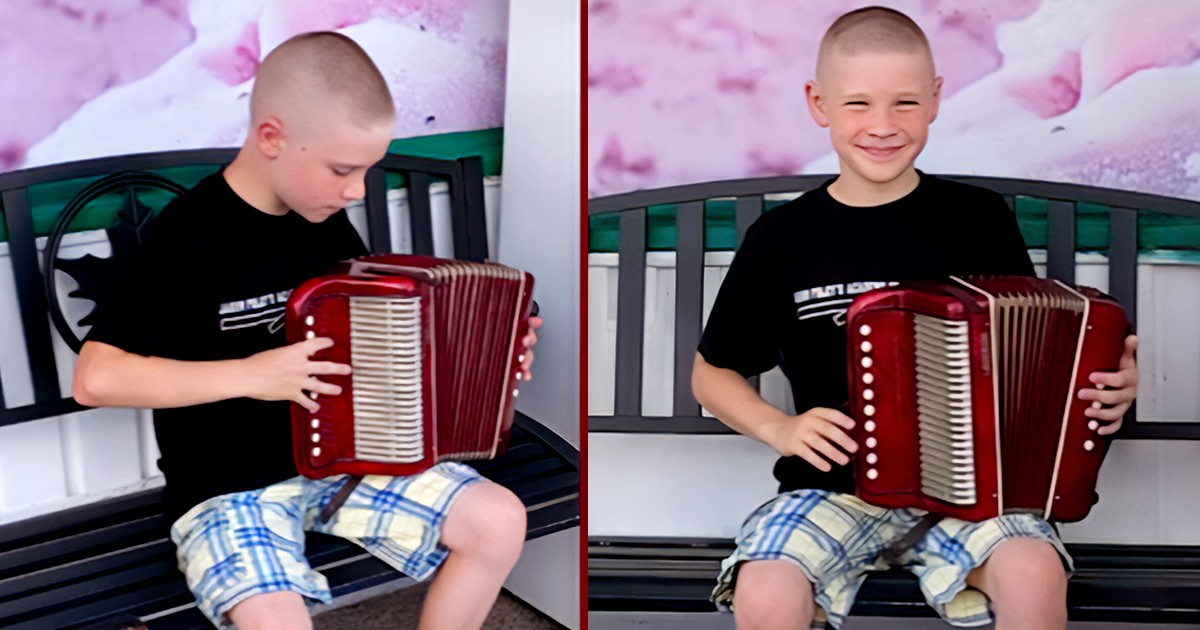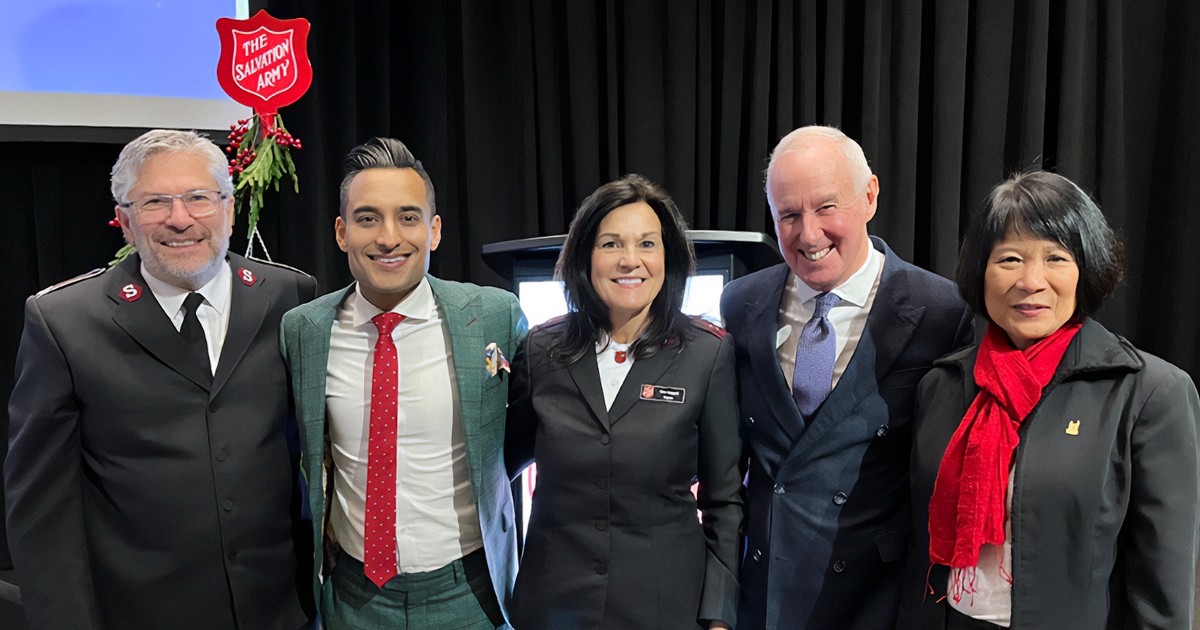“Yo, I’m never gonna get caught slippin’ again.”—Frosty
This quote almost sounds like it’s from a movie. In fact, it’s from a resident of Lawrence Heights, a neighbourhood in Toronto colloquially known as “The Jungle.” It’s home to approximately 3,500 low-income residents, mostly immigrants. Police frequently patrol the area and media reports of gun violence are common. Frosty (a pseudonym) is a young man who nearly lost his life in a shootout because he forgot his gun at home and was thus “caught slippin’.”
Did you know that poverty in Canada goes beyond houselessness? It can also look like neighbourhoods rife with violence and the ever-present threat of victimization, where each day is a battle of wits for survival. Perhaps you knew this. I did not.
I first read about Frosty and Lawrence Heights in the work of Dr. Luca Berardi as I was doing my master’s degree in 2019. He spent five years “doing life” with the men in that community as part of his dissertation research. I was shocked and heartbroken to learn about the violence and marginalization that occurs in my city. From there, I decided to pursue my own doctoral research, under Dr. Berardi’s supervision, in a similar Toronto neighbourhood: Regent Park.
Unsurprisingly, neighbourhoods with a concentration of poverty and violence are of concern for city officials, policy makers and law enforcement, not to mention community members themselves. One of the strategies they have devised in response—a strategy ubiquitous throughout North America—is “revitalization” or “gentrification.”
What is Gentrification?
If you live in any major city across Canada, you have likely seen “pockets” of poverty—places you don’t walk through late at night, or at all. In Vancouver, the Downtown Eastside is known for high levels of drug use, mental illness and homelessness. In Calgary, you may have witnessed some of the disarray and chaos that characterize a few blocks in each direction of the Beltline.
In Toronto, Regent Park has historically been one of these pockets of poverty to be avoided but is currently in the latter stages of revitalization. In Canada, this term most often refers to “middle-income homeowners moving into neighbourhoods that, historically, have been entirely composed of social housing,” says Dr. Sandra Bucerius, who leads a research team at the University of Alberta.
In Regent Park, the process began in 2006, when a large majority of residents lived below the income cut-off-rate for social housing, and involved the demolition and rebuilding of the entire neighbourhood in six phases.
Revitalization efforts are popular, in part because of the hope that it will reduce the effects of concentrated poverty. Another key tenet of revitalization is the idea that the original, low-income residents will benefit from interactions with new, higher-income residents. Disadvantaged neighbourhoods are often isolated from the rest of the city, and some have argued that cross-class interactions will benefit those who otherwise would seldom interact with people outside of their neighbourhood.
According to the research, the changes to the “built environment” (new homes and common green spaces) have been well received by all—both new and original residents. What’s missing? We still do not know if these “cross-class” interactions occur. Even more disconcerting, we know very little of the experience of the original residents, whose homes and neighbourhoods are turned upside down when hundreds of new residents move in.
In Their Own Words
Let’s go back to the opening quote from Frosty. What did this evoke in you? Fear? Surprise? Disgust? Sadness? In Regent Park, Bucerius’ team interviewed both original and new residents about their experience of the revitalization process. Here’s a cross-section of responses from the original residents:
“It’s just like, come on now, in reality, why would rich people … what do they have in common with us? Like, you know what I’m saying? They don’t. We’re not gonna do anything for them, we’re not gonna benefit them, so why are they gonna talk to us?” —Kanisha
“This family had a barbecue, and they did not invite anyone on my block. That would have never happened in the old Regent [Park]. They don’t want anything to do with us.”—Trevon
“They look at me … Actually, they stare at me when I walk into Regent [Park]. So, I do think they feel, you know, threatened by me.”—Sam
New residents described the situation in some of the following ways:
“I just feel uncomfortable around them. I don’t think everyone is a gangbanger, but there are certainly some … We have nothing really in common.”—Amy
“I have many friends, you know. I did not move here to make new friends with people I have nothing in common with. I bought an apartment. That’s it.”—Ken
“I attended a few of the community meetings, but we did not really talk with each other. Unfortunately, I cannot use many of the public spaces in the community very often, due to time constraints.”—Will
As I’m sure you can gather, the researchers found that while the physical outcome of the revitalization generally seemed positive, the social outcome was not. One of the main reasons for this is that the original residents have long regarded Regent Park as more than just a neighbourhood—it’s a community. New residents did not entirely share this perspective.
“At this point in the revitalization, it has not served to improve the lives of social housing residents; rather, it has made them more vulnerable by stripping away crucial ties that they rely upon on an ongoing basis,” Bucerius says. “This has made daily life more (not less) difficult, increasing the risk of downward (as opposed to upward) mobility. More and less privileged residents coexist, but do not interact or connect in any meaningful way.”
Some research indicates that, in fact, original residents are pushed out of the neighbourhood and forced to relocate to another disadvantaged space, now without the community they grew up with. On the flip side, sometimes new residents assume all the original residents have left and use this as a reason not to interact or pursue relationships with their neighbours. Both are true. Some residents have been forced to relocate, and others remain in Regent Park.
Beyond Helping
This is where we—researchers, policy makers and community members alike— must ask ourselves some tough questions. What do you know about your neighbours? What misconceptions do you have about race, gender or class? Do you feel you have any responsibility to your neighbours, specifically those you do not consider your friends?
The research surrounding revitalization is mixed. While there are certainly many benefits and positive outcomes to the process, we cannot ignore the results that suggest it may also adversely affect some residents.
I believe these real-life excerpts from original and new residents of Regent Park can teach us something applicable far beyond just this neighbourhood. As Christ-followers and Salvationists, we often like to see ourselves as more in touch with people, but we still engage in “othering.” We still play this game of “us and them” and we have a myriad of excuses to justify why we can’t even try to connect with people who are “over there.”
As Salvationists, our call and our mission are so much more than just helping people. When William and Catherine Booth first started The Salvation Army, they did what no other church was doing. They didn’t just help—they did life with those most disadvantaged and mistreated in society. They were not just interested in giving money or food to people—they were invested in relationships. It requires great humility to befriend someone and share life with them. It’s much easier to give money or volunteer once a week.
But we are called to more than this. We are called to walk alongside people, to share our space and our lives. That is how Jesus lived. How can you invest in those physically closest to you? How do your actions impact those people most at risk in society?
Recently I have been reflecting on our western construct of “ministry.” We often equate ministry with activity. It is nicely packaged and relegated to Wednesday evenings and Sunday mornings. But when we look at Jesus’ ministry, it was far less clearly defined. Jesus shared meals, long walks and early morning prayer sessions with people. He ministered to the woman at the well—actively violating societal norms—and he associated with those others despised. Ministry is not neat and tidy, and it is far more about connection than about “doing.”
It’s easy to connect with people we perceive to be like us. I am so thankful that’s not how Jesus operated. So much harm, division and suffering could be prevented if we were willing to move beyond ourselves and seek out all people, treating them as image-bearers of Christ regardless of age, gender, race, occupation, income level, appearance or even religion. That is how we are called to live.
Rebekah McNeilly is the social media and resource co-ordinator for women’s ministries in the Canada and Bermuda Territory.
Illustration: aleutie/stock.Adobe.com
This story is from:










Comment
On Friday, October 22, 2021, Debra said:
On Friday, October 22, 2021, Amanda Williams said:
On Tuesday, October 19, 2021, Maria Webber said:
Great article! Sadly most people are just afraid of each other in unknown situations. Drugs change a person's thinking and reasoning. So everyone looses because of this I think. Maybe a community center where once a month the community can get together and cook for the homeless and invite them to come will bring everyone together and get to know each other might help. If that's not already happening.
Leave a Comment